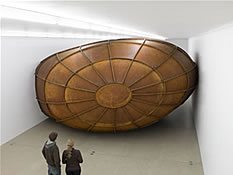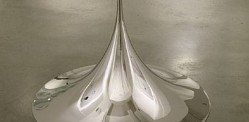Anish Kapoor has shaped the art scene of Britain. He is a British-Asian artist, born in Mumbai, India on March 12, 1954.
When Kapoor was nineteen years old, he moved to London, and it was here that he realised his potential as an artist.
Kapoor has created numerous art pieces over the years, but some of his most famous works of art are his sculptures.
He is known for his unique works of art. Each piece is unique and often makes a bold statement.
Although Kapoor normally leaves the interpretation of his art up to the viewer, his pieces always have a message behind them. Sometimes this message can be controversial.
His has held several exhibitions around the world. DESIblitz takes a closer look at the 7 best sculptures by Anish Kapoor:
Cloud Gate (2006)
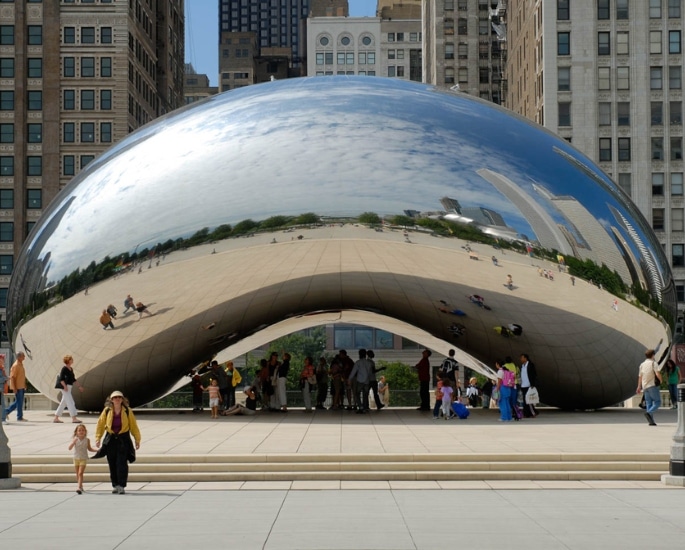
Cloud Gate is arguably his most distinctive and well-known sculpture.
Known affectionately as ‘The Bean,’ Cloud Gate boats an impressive size which tourists love to visit and examine.
What draws so many people to this sculpture is the way it reflects those who come to visit it. The entire sculpture is made from a smooth surface which mirrors the city of Chicago in the USA.
This makes it a popular place to take a photo, either in selfie form or as an interesting and distorted version of the cityscape.
Cloud Gate is constructed out of 168 stainless steel plates that were welded together. It is an impressive 42-feet high.
The construction of this sculpture began when Anish Kapoor won a competition to create a sculpture that would be unveiled at the Grand Opening of Millennium Park in 2004.
Even though the construction fell behind schedule, it was officially completed in 2006.
ArcelorMittal Orbit (2012)
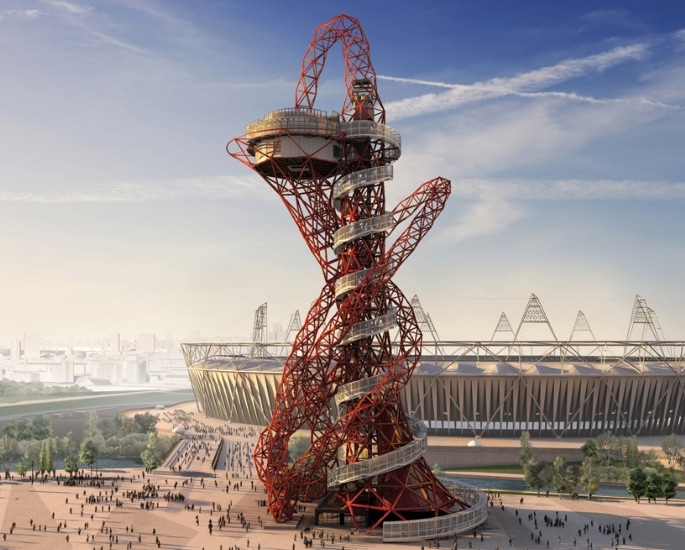
The size of Cloud Gate is impressive, but it does not compare to the size of ArcelorMittal Orbit (2012).
At a whopping 374 feet high, ArcelorMittal Orbit is the tallest piece of public art in the UK.
At this height, visitors can enjoy a 20-mile view of the Queen Elizabeth Olympic Park and the London Skyline.
This structure was created to honour the London 2012 Olympic and Paralympic Games. It was a collaborative effort between sculpture Anish Kapoor and engineer Cecil Balmond.
ArcelorMittal Orbit is predominantly formed of steel: enough steel to make 265 double-decker buses.
A few years after the construction, Anish Kapoor invited German artist Carsten Höller to create ‘The Slide.’
Attached to ArcelorMittal Orbit, ‘The Slide’ is the world’s longest tunnel, and guests can slide down it. It is an exciting activity for anyone visiting London. Tickets can be bought online.
When I am Pregnant (1992)
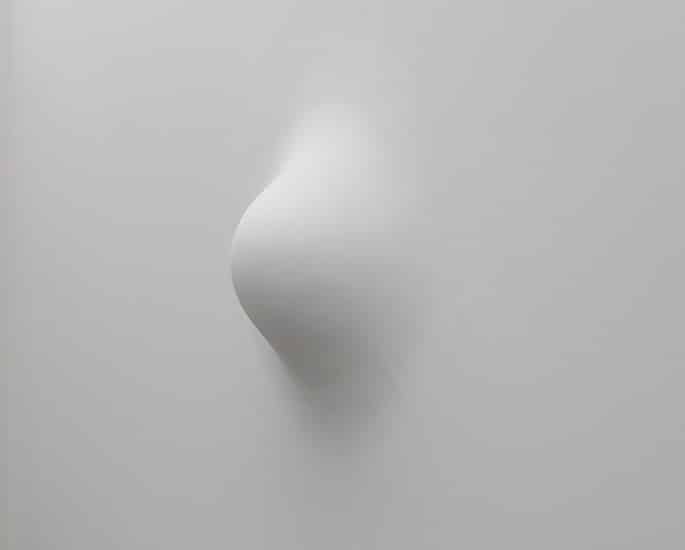
Up next is the 1992 sculpture of Anish Kapoor titled When I’m Pregnant.
Here we can see Kapoor’s ability to make on-lookers question the meaning of his work.
The sculpture itself can only be seen when the viewers regard it in profile. From a distance, the white bulge blends in with its same colour background.
When I’m Pregnant is made from fibreglass and white paint. The surface of it is smooth and sleek.
This is one of Kapoor’s minimalistic sculptures. Its colour is minimal and it does not stand out boldly like other works of his.
Gallery visitors are filled with questions such as “Why is Anish Kapoor, a man, contemplating his own pregnancy?” and “is Anish Kapoor suggesting that his artwork is reminiscent of one’s own child; a creation made in the mind and hands of the artist until born and revealed to the public?”
Later, Kapoor expanded upon When I’m Pregnant by creating When I’m Pregnant. Yellow (1999).
The sculpture is clearly linked to When I’m Pregnant: it is built into the flat wall surface and is similar in size.
However, unlike When I’m Pregnant, the style opposes the minimalism of the original. It is bright yellow and concave rather than convex.
Sky Mirror (2001)
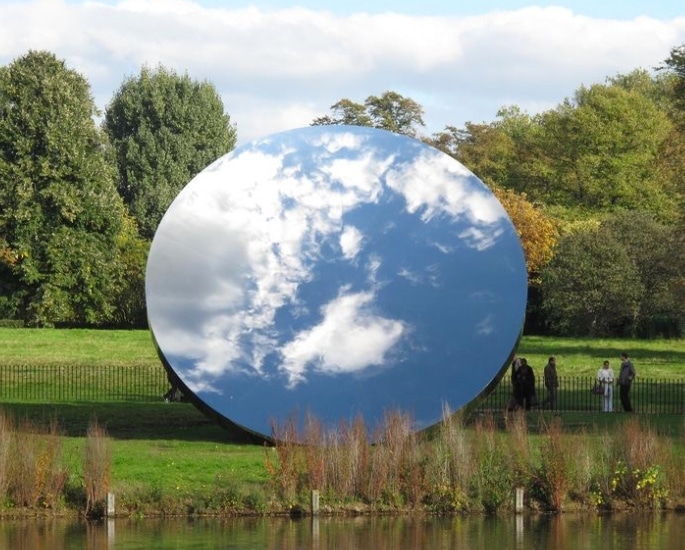
Sky Mirror boasts five versions across the world. The first was unveiled in Nottingham, England. The others can be found in London (England), New York City (USA), Saint Petersburg (Russia) and Tilburg (Netherlands).
The original was constructed in 2001 and is six metres wide. It can be found outside the theatre in Wellington Circus, Nottingham.
The New York City version, however, is an impressive 35 feet high. This allows for some large scale reflection and like English versions, the location makes it easily accessible to the general public.
Sky Mirror allows passers-by to ponder the way they see the world. In a busy tech-obsessed world, many of us spend a considerable amount of time looking down at our phones. Sky Mirror invites us to take a step back, look up and re-think our angle.
These sculptures are interesting because they are constantly changing. The image reflected in Sky Mirror will always be unique and fresh.
What the viewers see will depend upon the seasons, time of day and people walking past.
Marsyas (2003)
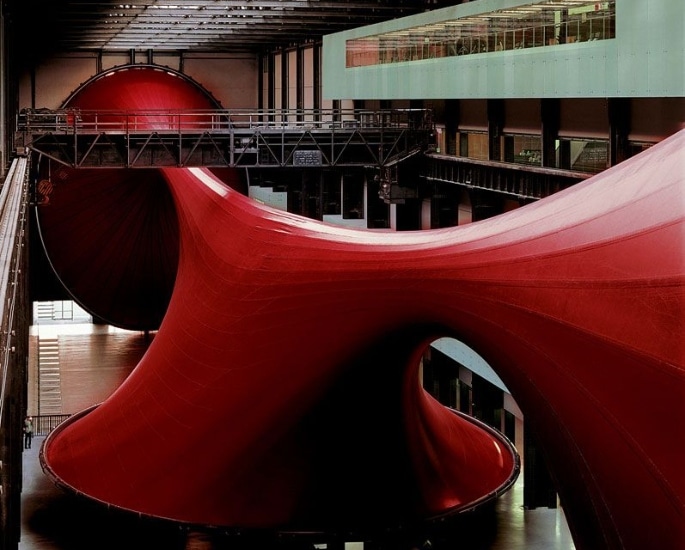
Anish Kapoor collaborated with designer Celil Balmond for his 2003 sculpture, Marsyas.
He began working on this piece in 2002. It constituted the third in The Unilever Series: a series of commissions displayed in the Turbine Hall of the Tate Modern Museum in London.
Marsyas is an iconic Kapoor structure because it was the very first time that any artist filled the Tate Turbine Hall with a piece of art. It is impossible to view the sculpture in its entirety from one angle.
The name Marsyas derives from a character in Greek mythology who was violently attacked by the divine, Apollo. The deep red of this sculpture is perhaps intended to make the viewer think of blood.
Marsyas is made up of three steel rings: two vertical and one below. The rings are connected through a red PVC membrane that stretches between them.
Prior to the construction, it took many sketches and significant brainstorming before Kapoor decided how to approach the size of the Turbine Hall.
His final design did not disappoint, with the result being undeniably epic. Visitors were able to walk around this sculpture, something that was planned by Kapoor and is very important to him.
Descension (2014)
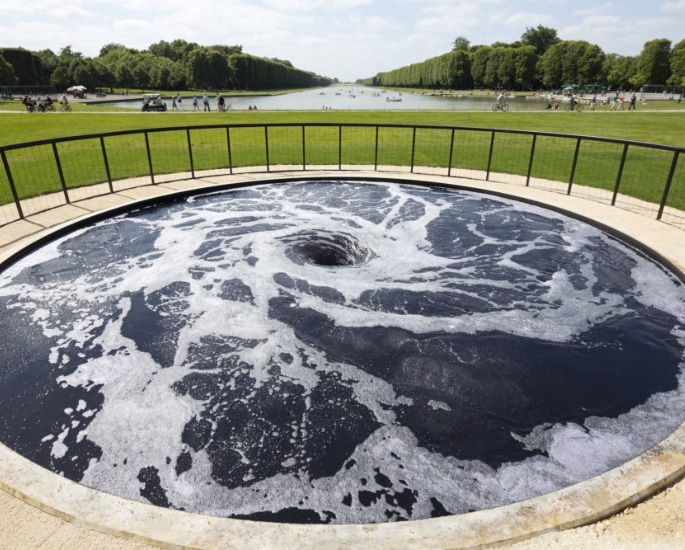
Situated in the idyllic setting of Versailles was once the troubling sculpture titled Descension.
Here we can see one of Anish Kapoor’s more critical pieces. He states that this piece was a criticism of American politics, in particular right-wing populism.
The sculpture itself shows a continuous swirling of water down a 26-foot vortex. It has a dark, ominous feel to it as the black water is being pulled down an unknown hole.
The meaning of Descension‘s vortex is up to interpretation. Some may see it as a portal into another world, while others may be wary of how it resembles an abyss.
Surrounded by railings so that viewers can peer inside, Descension is made from water mixed with black dye.
Kapoor later created two other versions of Descension: one in San Gimignano (Italy) and another in New York City (USA).
The Italian version is equally menacing as the original thanks to the use of intense black dye. The New York City version, however, does not feature any colouring. Instead, the water is left in its natural colour.
Dirty Corner (2011)
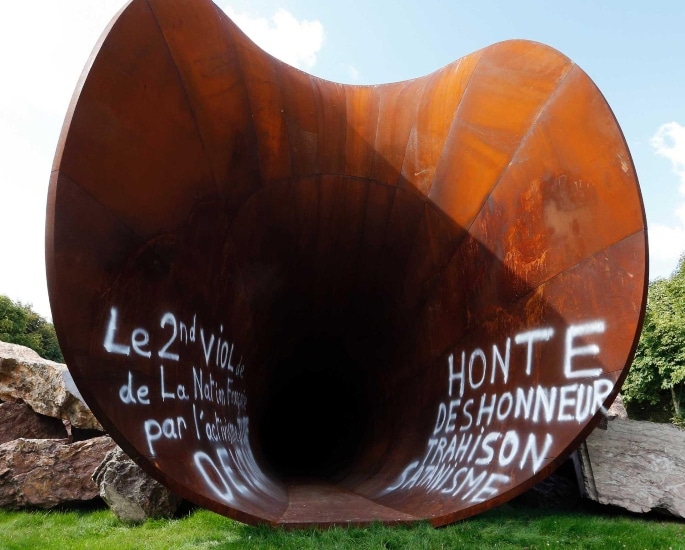
Last but not least, we have Dirty Corner.
Dirty Corner is an excellent example of how art can stir up our most powerful emotions.
A lot of art goes unnoticed by the public, but when displayed so grandly across the Palace of Versailles Palace, Dirty Corner was impossible to miss.
It is an impressive sixty metres high and eight metres wide.
Moreover, the meaning of it stirred up significant controversy. Kapoor revealed that it was intended to resemble a vagina.
More specifically, it is intended to signify the vagina of the French queen coming to power. It is not known exactly which queen, but many speculate he is referring to Marie Antoinette.
Many French citizens find this sculpture to be disrespectful. Some asserted that it defaces their cultural heritage.
When interviewed on the topic of Dirty Corner, Kapoor stated:
“Art does enter a conversation and needs to enter a conversation. Otherwise it’s irrelevant.”
Further controversy arose when individuals vandalised the sculpture with anti-semitic graffiti. Kapoor decided to leave the vandalism for all to see, but many believed this to be a bad move.
Even if viewers disapprove of the appearance and message of Dirty Corner, it is certainly a successful sculpture.
It has successfully added to an important conversation on the role of modern art. How critical are artists allowed to be? When does criticism become offensive?
Anisha Kapoor has been creating sculptures for decades, but he has not finished yet. To find out more about Anish Kapoor and his multitudes of work, please check here.




















































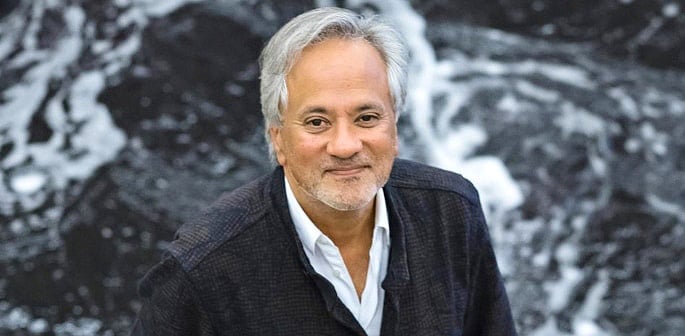




![Anish Kapoor at the RIBA Anish Kapoor [Image 2]](https://www.desiblitz.com/wp-content/uploads/2008/10/anish_kapoor2.jpg)
